Spring is the time of plans and projects.
― Leo Tolstoy
Spring is a season of new beginnings and growth. The days are getting warmer and longer, inviting you to get your daily dose of nature.
If you’re interested in a new project that will support your health, consider growing your own vegetables or culinary herbs. It’s the perfect time to start a garden — a fruitful way to connect with other living things, including your family.
There are lots of options to accommodate your space and time. You can bring the outdoors in with a potted herb from the grocery store or a windowsill herb garden that you start from seeds. You may prefer to get out in the fresh air by creating a container garden on the patio, a raised garden bed or an in-ground garden. There is something to suit everyone’s needs.
Cultivate #health with a backyard #garden or indoor herbs #saslife Click To TweetLearning and Family Bonding
In the spring, at the end of the day, you should smell like dirt. ― Margaret Atwood
Gardening is a great activity for all ages. From planting, to watering, to pulling weeds, there is a way for each member of the family to contribute, and maintaining a garden together encourages quality time away from screens and devices. The process will teach kids about plant life cycles, how to care for something living and how to complete a project from start to finish. You’ll also have the opportunity to teach them about the health benefits of the foods they grow. There’s no better way to get kids to love eating nutritious foods than to let them nurture and harvest them!
Health Benefits
The glory of gardening: hands in the dirt, head in the sun, heart with nature. To nurture a garden is to feed not just the body, but the soul. ― Alfred Austin
Growing a garden will nourish your body and soul by incorporating the major lifestyle factors that contribute to well-being. Stress management, balanced nutrition, movement throughout the day, and adequate sleep are four factors that can all have a big impact on your physical and emotional resilience. Gardening has been proven to improve mood, cognitive function and BMI. In addition, as you tend to your outdoor garden, you’ll be increasing your exposure to sunlight which has been shown to improve sleep quality and length. Digging in soil may even benefit your gut microbiome!
The harvest itself will offer its own benefits. Herbs add a combination of flavor, antioxidants, anti-cancer, anti-inflammatory and/or anti-microbial properties to your meals. Eating a colorful variety of vegetables and fruits improves happiness and reduces your risk of heart disease, stroke, cancer and premature death. Getting your 8-10 servings daily is easier when you can pick them out of your backyard! The flavor and nutrient content of freshly-harvested veggies can’t be beat, and you’ll be sure to save some money on groceries when it’s time to harvest.
What You’ll Need
Place
Most herbs and vegetables need lots of direct sunlight (at least 6 - 8 hours). Root vegetables can thrive with less (at least 3-6 hours), while shade-tolerant leafy greens and broccoli do their best when direct sunlight doesn’t exceed 3-6 hours daily. When planning your garden, snap some photos at different times of day so you can find a location with the optimal amount of light. Keep in mind, it will be easier to water plants regularly if they are in a convenient location close to a faucet.
Tools and Equipment
Gardening gloves, a trowel, watering can and pruning shears cover the basics. For larger gardens, a gardening fork, shovel, wheel barrow, rake, hose and fencing may also come in handy. Customize your setup. Containers can be as simple as empty milk cartons or buckets with holes in the bottom for drainage. There are endless ways to create a raised garden bed and a variety of materials that can be used.
Soil
For maximum benefit to you and the earth, choose organic soil. If you are planting in containers, fill them with potting soil, which is light enough to allow water to drain easily. For raised beds, experts recommend a mix of 60% topsoil, 30% compost and 10% potting soil. Compost is an environmentally-friendly way to increase nutrients in the soil and improve its texture and drainage.
Plants
For a full and budget-friendly gardening experience, purchase a variety of seeds. Tomatoes, cucumbers, carrots, radishes, green beans and zucchini are all easy to grow from seed. If you want to get things moving quickly, order some potted herbs or vegetables that are already started for you. Transplanting them to a larger pot or in the ground is an easy process.
Everything that slows us down and forces patience, everything that sets us back into the slow circles of nature, is a help. Gardening is an instrument of grace. ― May Sarton
Choose your own adventure, and check out the resources below for some additional guidance.
- How to Grow Herbs Indoors
- Culinary Herbs Are Easy to Grow
- 4 Fun Ways to Enjoy a Family Garden
- Container Gardening
- DIY Container Garden
- Vegetable Gardening: A Beginner's Guide
- Garden Planning Tool
References
- Evolution of well-being and happiness after increases in consumption of fruit and vegetables
- Fruit and vegetable intake and the risk of cardiovascular disease, total cancer and all-cause mortality-a systematic review and dose-response meta-analysis of prospective studies
- The basic roles of indoor plants in human health and comfort
- Levels of nature and stress response
- Gardening is beneficial for health: a meta-analysis
- Effects of light on human circadian rhythms, sleep and mood
Cilantro Mint Macadamia Pesto
Recipe Adapted from: Craving4More
Makes approximately 1 cup
PRINT RECIPE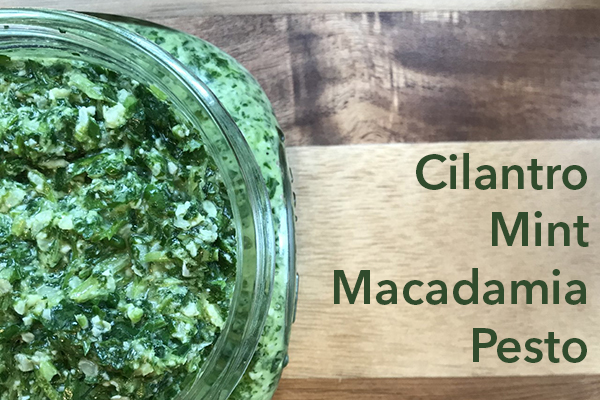
Ingredients
¼ cup chopped macadamia nuts
1 cup loosely packed cilantro
½ cup loosely packed basil leaves
¼ cup loosely packed mint leaves
⅓ cup extra virgin olive oil
juice of 1 lime
¼ tsp sea salt
¼ tsp black pepper
Directions
- Combine all ingredients in a high-speed blender or food processor and purée until slightly chunky, but mostly smooth.
Notes
- Use within a few days (it will keep longer if you pour a thin layer of oil on the surface) or freeze.
- Serve on top of fish, poultry, pork, lamb or beef, or use as a dressing for whole grains, bean salad, roasted vegetables or roasted potatoes.
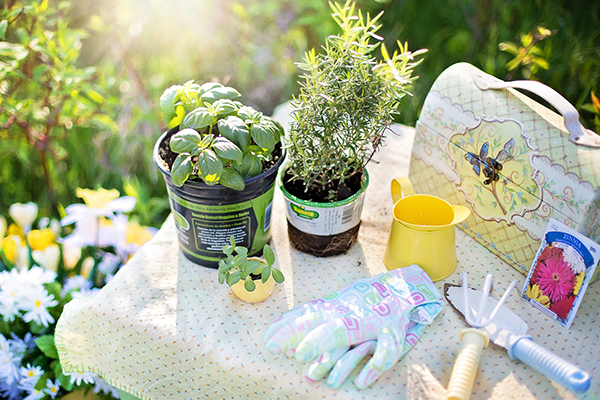
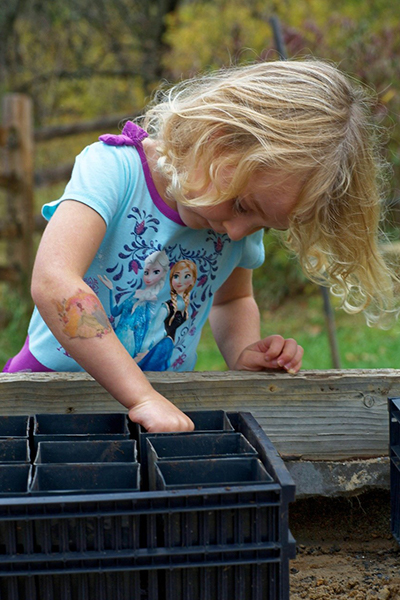
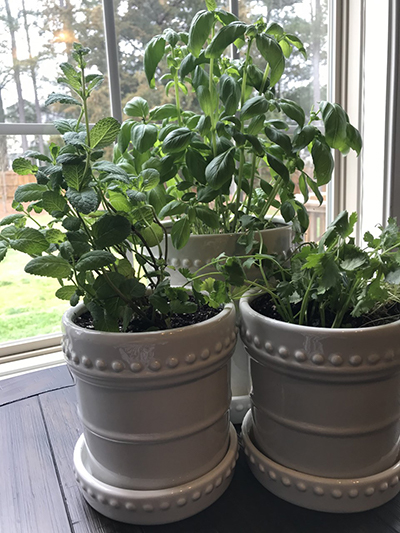
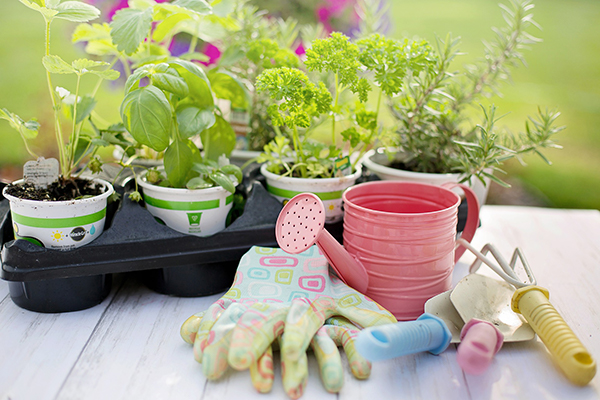
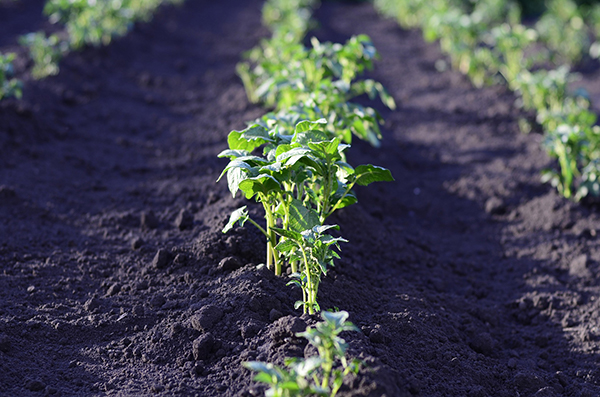
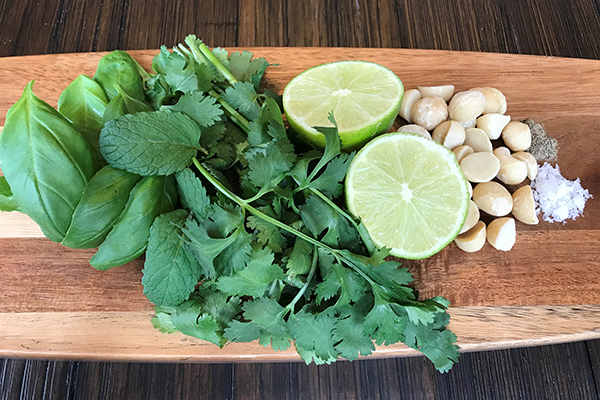
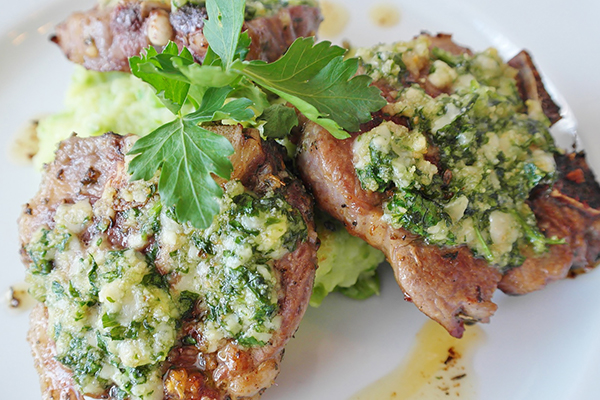

4 Comments
Love this, Jen! We had a large garden at our last home, but haven't made the time to create a space in our new home yet. One of the first #projectbasedlearning assignments I gave my boys (ages 6 and 8) was to research, design, measure, and build a raised bed for a garden. I'm proud to say we finished building the raised bed last weekend. We also started tomatoes, peppers, and marigolds indoors for planting in a month or so. We planted the seeds in cardboard egg cartons and then placed them in rotisserie chicken boxes and as mini greenhouses. One of our favorite memories from our last garden was digging potatoes and carrots with a 2 year old and, there's something about growing the vegetables that makes them more appetizing to kids!
That's fantastic, Amanda! I love the idea of using egg cartons to start seedlings, and I'd never heard of using a rotisserie chicken box as a mini greenhouse. Smart!! Sounds like a great family project! I've done container gardens in the past, but this will be my first year with a raised garden bed. The kit was just delivered yesterday, so setting it up will be our family project this weekend. And, I set up our compost bin last weekend, so we're all in - going green! 🙂
I have grown basil for years and make pesto, pour it into ice cube trays and freeze it. Pesto all year!!!
Great idea, Pauline! Thanks for sharing. 🙂